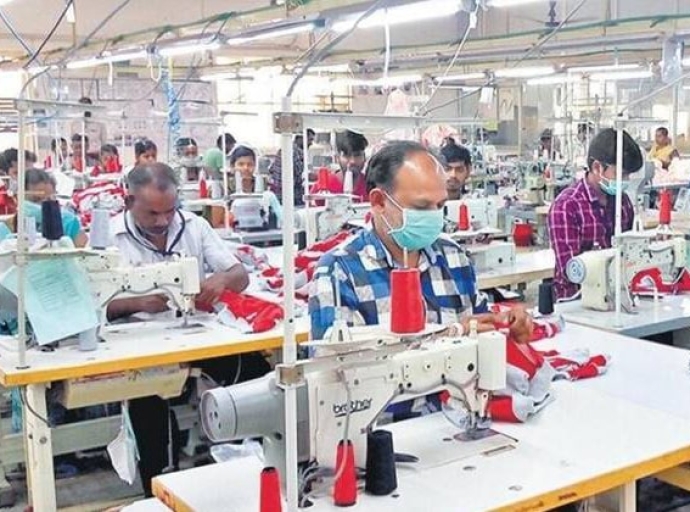21 February 2024, Mumbai
The Future of Fashion: From Fast Fashion to Digital Design
While traditional fast fashion grapples with mounting criticism and sustainability concerns, a new era dawns, driven by groundbreaking life-changing technology like Generative AI (GenAI).
Video Insights
That is GenAI's job; GenAI must have done something very right as this innovative force is fundamentally restructuring how we design, produce, and experience fashion, offering a promising alternative to the current system.
GenAI injects value across entire supply chains, transforming the process from ideation to consumer interaction. Imagine designers effortlessly generating diverse, unique designs based on mere inputs, streamlining the creative process and accelerating time-to-market.
Tailoring to customisation
After all, every individual is unique in himself!
GenAI also fuels personalization, ensuring garments perfectly match individual preferences and body types, minimizing waste, and maximizing satisfaction.
This shift away from fast fashion's mass-produced, disposable model paves the way for a more responsible and sustainable approach. Digital fashion, empowered by GenAI and other advancements, offers unique solutions.
In the digital era of resource conservation approach; garments are designed and tailored virtually, eliminating physical samples and production runs. Consider 3D printed clothing, crafted using only the required resources, minimizing waste and environmental impact.
Of course, this digital transformation necessitates adaptation. Embracing new technologies, fostering collaboration between tech and fashion industries, and addressing ethical concerns related to data privacy and potential job displacement are crucial steps.
Huge multiplier; The future of fashion lies not in replicating the unsustainable practices of the past, but in harnessing innovation to create a more responsible, personalized, and exciting experience.
New paradigms; GenAI and digital fashion are not just trends, but the driving forces shaping a truly revolutionary era in how we dress and express ourselves.
Fashion Revolutionized
Get ready for a fashion future reshaped by AI! Generative AI, a game-changer in the industry, unveils entirely new avenues for product creation and marketing. Imagine a technology that not only boosts efficiency and spurs innovation but also caters to evolving customer needs like never before.
How Generative AI is Reshaping the Industry; Fashion is getting ready for alternate solutions by not relying solely on traditional inspiration.
Smart solutions
Generative AI tools crunch real-time, unstructured data, opening doors to fresh creative paths. Think of designers feeding sketches and specifications into a platform, instantly generating diverse design options.
Expect the unexpected; This unlocks rapid prototyping, exclusive drops, and even brand collaborations! Imagine using facial recognition tech to personalize eyeglasses for each customer, perfectly matching their style and preferences.
There is much more to it
But AI's magic extends beyond design. It empowers marketing teams to craft targeted campaigns, generate personalized content, and build unique virtual avatars for every platform.
This translates to laser-sharp targeting, individualized messaging, and trend prediction, giving brands a significant edge.
Enduring impact, AI's impact goes beyond creativity. It optimizes resource usage for eco-friendly practices, predicts trends for smarter inventory management, and personalizes the shopping experience, leading to higher engagement and sales.
By embracing this revolutionary technology, fashion brands can create lasting value and redefine themselves.
Insightful findings
An earlier report by WGSN explores the integration of multidimensional technologies in the fashion industry and how they are rapidly evolving and cross-pollinating, progressing toward a multi-layered future.
The report discusses the role of AI in fashion, including generative AI fashion, digital reality fashion, and robotic attire.
Generative AI (GenAI) has the potential to aid fashion designers in the creative process by offering a myriad of innovative design suggestions.
Own the occasion; However, GenAI's role in fashion is not to supplant human creativity but to amplify it. Designers still retain a pivotal role in interpreting and refining AI-generated designs.
How does the future look?
What is in offing; The future holds seamless virtual try-on experiences, voice-based commerce, intelligent pricing strategies, and automated product tagging.
How can any space/anyone be surprised by the impending impact of GenAi by not joining the movement and unlocking a world of possibilities in the ever-evolving fashion landscape?
Many experts don't see the overall headcount coming down in absolute terms notwithstanding the disruption it may cause on the back of huge productivity enhancement it is expected to kick in.
As per Microsoft CEO Satya Nadella's recent iteration that we are on the cusp of revolution," AI may not lead to a reduction in jobs but a creation of new jobs requiring new skills".
5 Key Insights:
- From Fast to Digital: Shift from unsustainable mass production to responsible, personalized digital fashion.
- GenAI Tailors: Personalized designs with minimal waste thanks to AI-driven customization.
- Virtual Solutions: Resource-efficient digital design and production (e.g., 3D printing).
- Collaboration & Ethics: Embrace new tech, foster collaboration, address data privacy and job concerns.
- Revolutionary Era: AI shapes a more responsible, personalized
Latest Textile Events


































